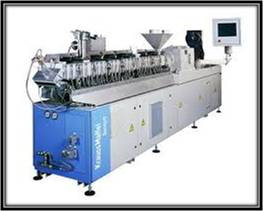Style
Without
Borders
The process of thermoplastic compounding
Thermoplastic compounding is quite a popular procedure of mixing polymer with different additives and fillers to produce a different product altogether. This process gained huge popularity because of the fact this is a low-cost alternative of polymer production. Using this process, it has become quite easy to alter the properties of base polymer. If you go through the facts about different categories of polymer, you will be utterly surprised to know that many polymers are actually produced due to compounding one kind of polymer with different types of resins and additives. The process of compounding changes the physical, thermal, electrical and the aesthetic characteristics of the base polymer.

The process of compounding is quite easy, as the base polymer is given within the extruder along with the additives. The additives usually depend on the kind of product the company is manufacturing. The company that deals with custom compounding can actually adds up to 60 varying kinds of resins, depending on their requirements. If you check the facts and figure about compounding you will see that most of the polymers are compounded immediately after the synthesis, as they would not survive without additives for prolonged period and would be of no use.

With the advent of the concept of thermoplastic compounding, more and more companies are coming up with products manufactured out of this procedure. The reason behind the increased use of this procedure to manufacture thermoplastic materials is its cost efficient nature. Alongside, using this procedure can save a lot of production time as well.

If you are interested about knowing more about the working procedure of custom compounding, you can check out the company websites such as Polyvisions. Using this procedure, it is easy to reduce the increasing plastic waste. Recycling the waste polymer through this thermoplastic procedure is quite environment friendly as well.